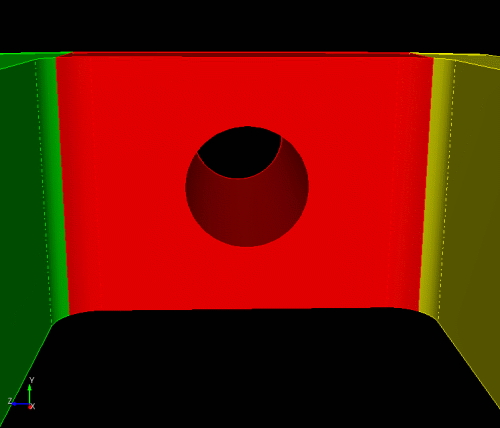![]()
Coreform Cubit 2025.8 User Documentation
![]()
Composite surfaces are adjacent surfaces that have been merged into one surface. Composite surfaces are created using Virtual Geometry, which is a built-in geometry kernel that sits on top of the existing geometry, and does not change the underlying geometry definition. Virtual geometry has the added advantage of being reversible. It can be removed after meshing. The general purpose for using composite surfaces is to deconstrain the mesh. For example, compositing two surfaces will remove the requirement that nodes be placed on the curve between the surfaces. Composite surfaces will be used in this example to facilitate the sweeping algorithm.
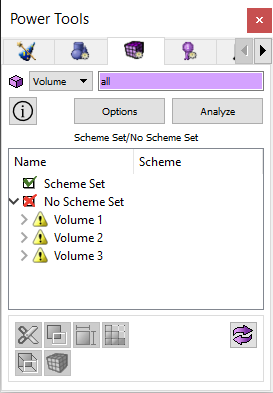
No volumes are listed as automatically meshable. In the graphics window, red indicates that the volume scheme has not been set. Green indicates that the scheme has been set.

The Geometry-Surface-Modify-Composite menu will open on the Control Panel.
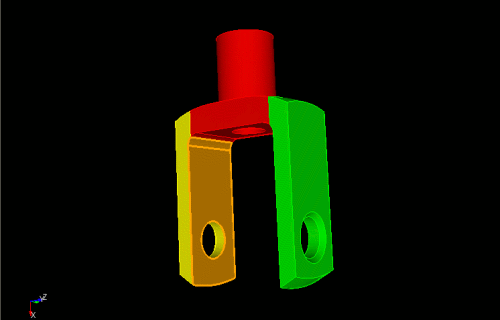

The two surfaces should appear merged.
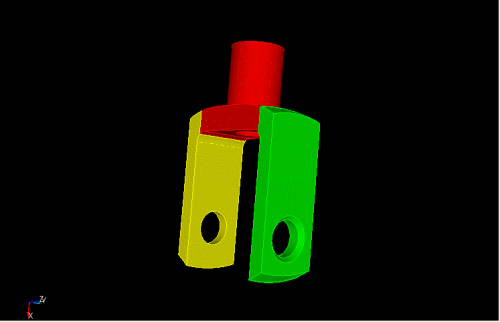
Repeat these steps with the opposite side.
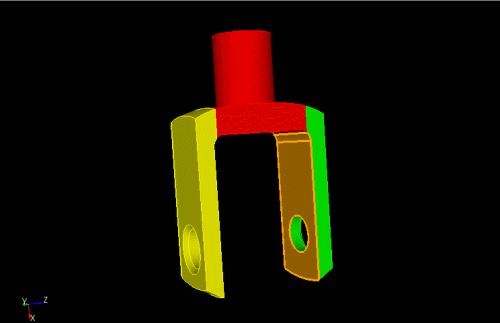
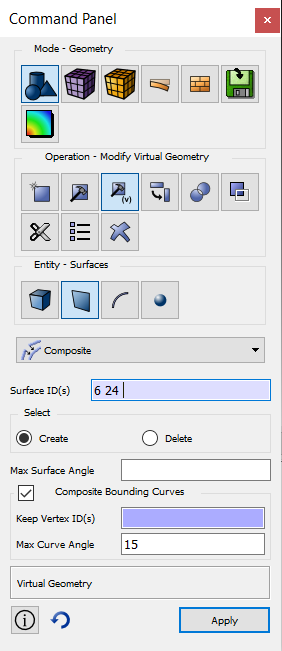
Check to see that the surfaces have been composited and that your graphics window looks like the following image.
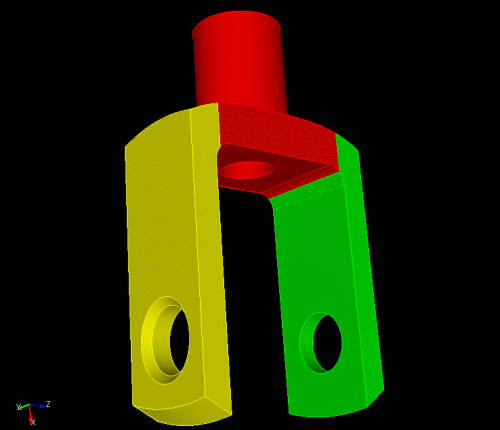
Finally, surfaces 11, 25, and 35 (shown below) need to be composited.
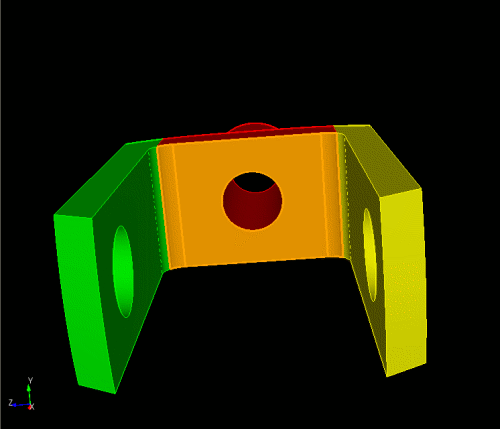
Use the command panel to choose surfaces for the composite command.
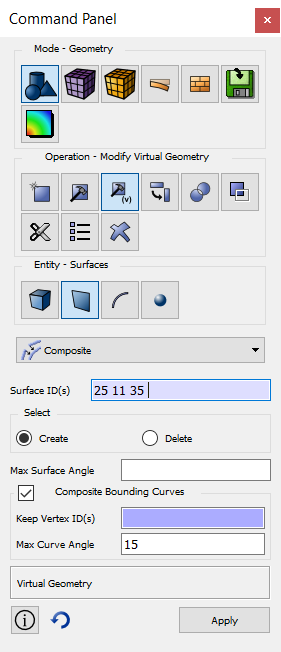
Press the apply button and check the results in the graphics window.
